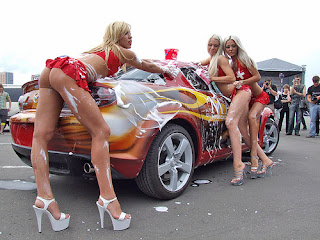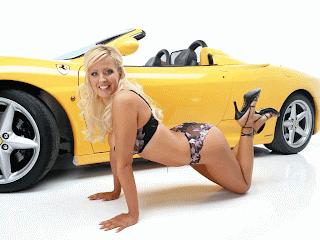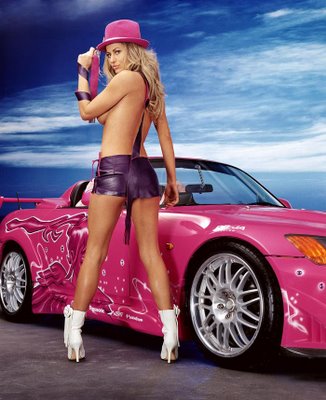A week after unveiling its bigger and better Legacy, Subaru is now letting the other shoe drop. Or should we say letting its hiking boot drop. Since 1994, the Outback has been the Legacy's rough-and-tumble alter ego. Their Indiana Jones to the Legacy's tweedy Dr. Henry Walton Jones, Jr. And like Harrison Ford himself, the Outback has gained in both savvy and physical size since his swashbuckling debut, though neither one appears to be any less willing to tackle genuine adventure.
As with the Legacy's architecture, the 2010 Outback has swelled in size. Its wheelbase has added 2.8 inches, it's been widened by 2.0 inches, and its height has been elevated by 4.0 inches. The consequence is an interior that's ballooned by 8 cubic feet of passenger room (up 7.6 percent), while cargo volume (with folded rear seats) is up 8.4 cubic feet. Aging whip-crackers will appreciate its additional 3.5 inches of front hip room (1.3 in the back) and 4 extra inches of rear legroom in which to straighten arthritic knees. Although the Outback's overall length has actually contracted by nearly an inch, those gains in width and height give it a much more imposing visual presence.
As the Legacy and Outback share much sheetmetal in common, the styling of either one has always been a delicate compromise. In this case, we think the Outback has gotten the better end of the deal; here, the thick eye-browed wheel arches, wide-eyed headlamps, and general musculature, make a lot more sense. Adding to this wagon-ized Legacy's bodywork are such bush-whacking filigree as a toothy lower front valance, side rocker cladding, and a standard roof rack featuring pivoting cross bars which either link the side rails or fold back to reduce wind resistance and aero-noise. Underneath, ground clearance has risen to a lofty 8.7-inches.
Inside, there's a traditional but handsome four-gauge instrument panel that includes a multi-display dash-center screen (that's optionally upgradable to a nav system with back-up camera). What you won't see, though, is a center handbrake. That function is now electrically-engaged by a push-on, pull-off switch located below-left of the new three-spoke steering wheel (consequently, you can now hill-hold indefinitely). Less noticeable is the seats' reshaping (presumably accept more rotund American back- and bottom-sides). Three trim packages (base, Premium, and Limited) will be offered for both the 2.5i and 3.6R-engined Outbacks.
Except for the Legacy GT's turbo-engine variant, the Outback shares much mechanically with its more asphalt-oriented sibling. As indicated above, two engines are available, a revised 2.5-liter, normally-aspirated flat four (including Subaru's i-Active valve lift system which fattens the engine's torque curve), offering 170 horsepower at 5600 rpm and 170 lb-ft of twist at 4000 rpm. This is available with either a new 6-speed manual transmission together with a viscous locking center differential, or a really, really all-new CVT companioned with an electronic continuously variable transfer clutch. A chain-type system, this CVT is impressively compact, and notably, the world's first longitudinal, awd CVT application. And for folks bewildered by its infinite gear-ratio options, a pair of steering wheel paddles afford a sort of a six-step program for recovering descreet-ratio addicts (each toggle beckoning a new synthetic ratio).
The new regular-grade gas-swilling 3.6-liter flat six (which debuted in the Tribeca) replaces the previous gas-picky, premium-grade-demanding 3.0-liter, while offering 16 extra horsepower and 32 additional lb-ft of torque in the bargain. Only one transmission is available here, a five-speed auto which is coupled to Subaru's VTD (Variable Torque Distribution) AWD system (wherein a center diff interacts with a continuously-variable hydraulic transfer clutch). No matter the engine (or transmission or awd system), all Outbacks now enjoy 18.5-gallon fuel tanks, a useful bump from the previous edition's 16.9 gallons. Mpg numbers are expected to be 19/27 for the manual-transmission 2.5i, 21/27 for its CVT version, and 17/23 for the 3.6R.
Securing either the 2.5-liter or 3.6-liter engines are new, widely-spaced mounts which greatly subdue the transfer of vibration. Moreover, these mounts themselves are joined by a new third mount located beneath the engine's nose. And this, in turn, was made possible by a new, full-perimeter front subframe which helps to both locate the wider-track MacPherson strut front suspension and better manage the powertrain's motion in a frontal crash. The Outback's outback is now supported by a double A-arm rear suspension, replacing the previous multi-link assembly, and all models now enjoy stability control, ABS and electronic brake-force distribution. And amusingly, every Outback variant is now shod with taller sidewall tires to improve ride quality-Subaru's tradition of counter-chic design is reassuringly alive and well.




















0 Comments:
Posting Komentar